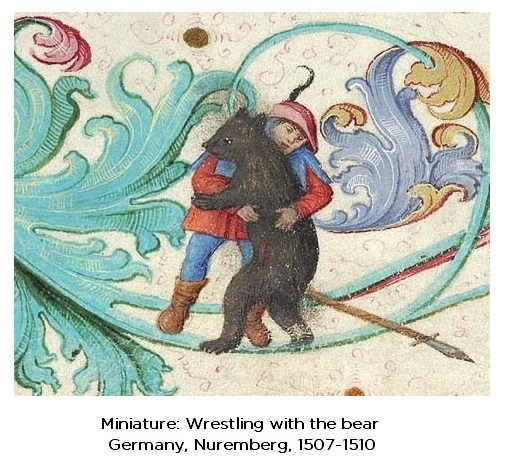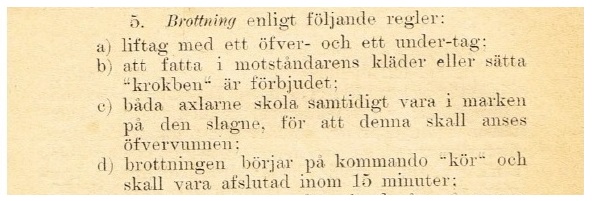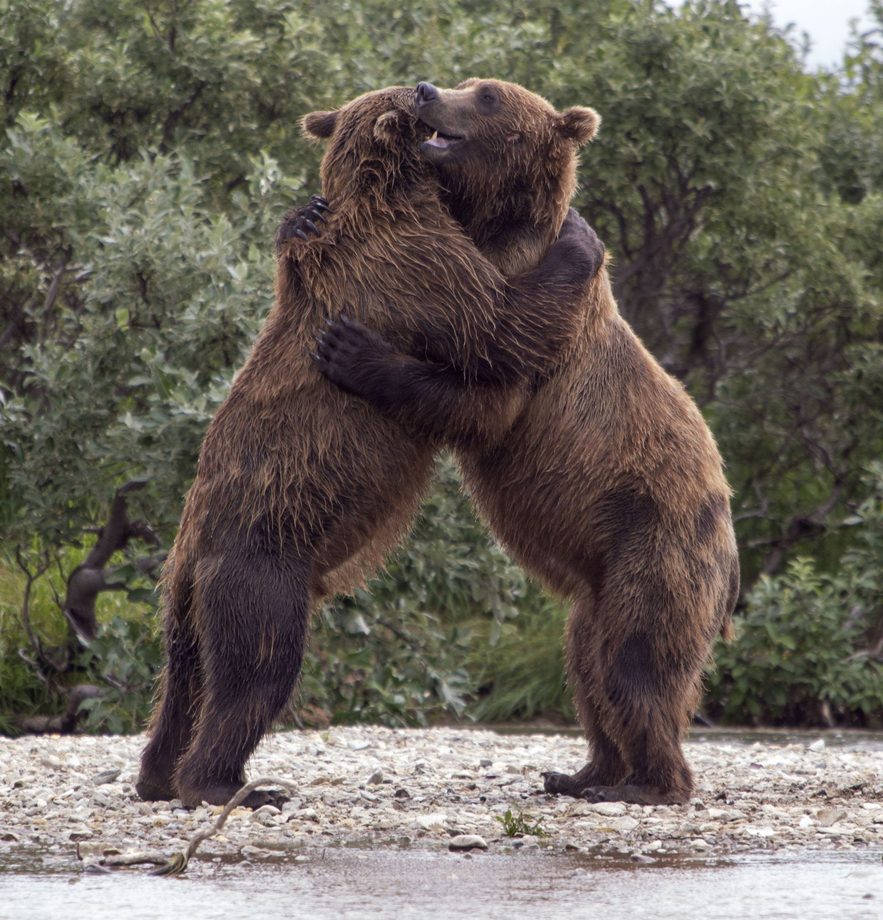Special Thanks To:
Ms. Sofia Hoas Culture/Heritage advisor at the Gotlands Museum and Mr Per-Ola Nilsson of the Föreningen Gutnisk Idrott and the staff of the Visby Bollklub.
A Father of Them All – The Bear-Hug.
The research I’ve done which resulted in my book called “The Story of Catch” covers various historical traditional catch-hold wrestling styles of Western European origin, such as English, German, French, Dutch and Flemish. Since it was first released in 2019 I have received many inquiries (by mail, email, and on Facebook messenger) about traditional folk wrestling styles, but one main question remains- which one is the most ancient based on my research of 15 years? I decided to go ahead and share my personal opinion which is fully based on facts and historical material that I’ve collected over the years.
During my studies I was able to establish that the there were three traditional English folk wrestling styles (wrastelynge), namely: “by the collar” (wrestling at the arms’ length, tripping feet and hooking legs), “by the belt/holdster” (close wrestling, playing with the hip, i.e. cross-buttocking) and the most common and arguably the most ancient style of all (since it required no special wrestling tools as the other two styles did), an ultimate trial of strength “the hug”.
All three folk English styles were imported to England in the VIII-XI centuries by the Norsemen/Vikings, the North Germanic people of Scandinavia. The folk wrestling styles of Vikings were well researched by the famous Swedish archivist and antiquarian called Johan Gustaf Liljegren (1791-1837). In his 1818 book called Rolfs Sturlögssons eller Gånge Rolfs Saga (“The Story of The Hero of Scandinavian Antiquity: The Saga of Gaange Rolf”) on Page 313 he mentioned the Liftag/Ryggtag wrestling among other wrestling games which were popular among the Norsemen, and thus described it:
“Det enklaste var lausa-tauk, hvarvid de med händerna fattade uti hvarandra (armtag), eller grepo hvarandra om lifvet (liftag, ryggtag), det bästa de kunde, och med armarnes kraft sökte få hvarandra ur jemvigten.”
"The simplest style was lausa-tauk, in which they grasped each other with their hands (arm-grip), or grabbed each other by the waist (waist-grip, back-grip), the best they could, and with the power of their arms sought to get each other out of balance."

The Viking wrestling styles were still actively practiced in England in the Middle Ages and even during the Modern History. For example famous journalist and businessman, a native of Yorkshire, named Charles Fothergill (1782-1842) says in his diary (dated 1805) that in the hamlet of Fremington, in the Yorkshire Dales in North Yorkshire the local men had two wrestling styles: wrestlers take hold of each others hands and wrestle at “arms length” with their feet and legs, and the old-fashioned hug around the waist in which a lot of strength is required.
I will be describing in further detail my analysis of the Hug wrestling below.
The Hug wrestling was an equal over-and-under hold around the body, and to win the match wrestler had to unbalance his opponent and throw him down on his back only using the strength of his arms and core, i.e. by lifting, pushing, pulling and swaying him from side to side. According to the old Germanic tradition only wrestling with hands and arms was considered a true wrestling, a fair and manly game, the use of feet and legs for throwing was strictly prohibited. The contest itself was an exhibition of sheer strength and in the past many strong men suffered broken backs as the outcome of that brutal game.
In England the Norsemen Hug was known under the names of the “Cornish Hug” (in the West Country) and the “Yorkshire Hug” (in the Dukedom of White Rose). Probably the best description of the original Hugg Wrastelynge which found its home on English soil was written in 1827 by a wrestling sport advocate and practitioner who wrote under the assumed name of “Sam Sam's Son”:
“Both grasp alike, and not much science is required. It only takes place where each conceives himself to be the stronger of the two. It is either right or left. If right, each man has his right hand on the other's loins on the left side, and his left hand on the right shoulder; they stand face to face, and each strives to draw his adversary towards him, and grasp him round the waist, till the hug becomes close, and the weakest man is forced backward - the other falling heavily upon him. This is a very sure and hard fall”.
On the Continent the original ancient Germanic test of strength with equal hold around the body was known as the “Bears’ Fight” or “Berengevecht” (in Dutch) because of its close resemblance with actual bear-hugging in wildlife. The most common names of that wrestling style were: lyfvatten (Body-Hold in Dutch), à bras-le-corps (literally definition is “with both arms around somebody's body” a French term for the old Frankish Hug wrestling style), and bauern griff (Farmers’ Grip in German). The conditions of that game were exactly the same as described above. Over the time this prehistoric trial of strength evolved into a standing (upright) catch-hold above the waist (often holds were restricted to the arms and torso only) wrestling style which was a very popular pro wrestling style (entertainment) in Medieval Germany, France, and the Low Countries. That led to the further evolution which culminated in the early 1800s with a birth of the French style of wrestling aka Graeco-Roman, which nowadays is an International Olympic sport. At the same time In England the original Hug wrestling remained unchanged and as previously shown still existed in its original form of the “test of strength” even in the early 1800s.
The old bear-hug wrestling was revived in Germany in the beginning of the XIX century by the German Gymnastic Society (Turnvereins, Turners) and became one of their official wrestling exercises.

The ancient Viking Hug wrestling still currently exists. It is one of the sports of the annual Stångaspelen (Stånga Games) competition called Gutnisk Femkamp (Gutnish Pentathlon, or Five-game Championship), which includes running, throwing the varpa-stone, high-jump, caber-tossing and the wrestling match which is a decisive final contest for the overall championship. The first such championship was held in Wisborg (Visby) in summer of 1892; the winner to receive a silver loving cup and 50 kronas in cash. Notably, the very first final of the 1892 Gutnisk Femkamp saw the struggle between the two brothers A. and Hj. Hellgren which resulted in the victory of the former who was only 18 years old.
Here below I am giving a translation of the original 1892 rules of the Gotlandic Ryggkast Wrestling as they appeared on the Page 78 of the 1897 book by Josef Elers called “Gotländska Idrottsminnen”.
Wrestling (Brottning) according to the following rules:
a) A Hold, the body-lock (Liftag) with an over-and-under hold.
b) Grasping the opponent's clothes or tripping/hooking his feet/legs is forbidden.
c) Both shoulders of the defeated wrestler must be on the ground at the same time, for this to be considered a victory.
d) Wrestling match starts with the command "Kör"(run/go) and must be completed within 15 minutes.

A dangerous game of Ryggkast wrestling truly is a Viking sport in which brutal physical strength is a decisive factor. As recollected by 5-time finalist and the 1990 Femkamp Champion Mr. Lars Thomsson of Vänge, the Ryggkast fight is almost a “near-death experience” in which the wrestlers “get hurt easily and often have their collar bones broken”, it is always the strongest man who wins the combat.
Currently in many countries the bear-hug (equal over-and-under hold) contest is an essential part of the elementary wrestling syllabus. It is a great conditioning game, in which to win there’s no need to give your opponent a fall (throw him), to win the match it is enough to lift him off his feet.
© 2021 Ruslan C Pashayev All Rights Reserved.


